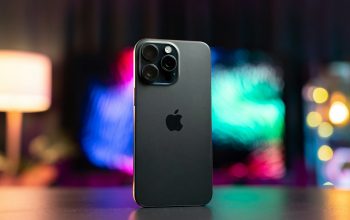Google is tightening the hardware requirements for Android 15, with stricter rules on storage and RAM that could leave some budget smartphones and tablets behind. Devices with less than 32 GB of internal storage or insufficient RAM will not be eligible for the update.
According to Android Authority, Google is raising the bar with Android 15 to ensure a better user experience, even on entry-level devices. The goal is to improve overall performance and reliability, particularly in the budget segment where resources are often limited. However, the requirements go beyond just storage and memory.
Android 15 Now Requires a Minimum of 32 GB Storage
One of the key changes with Android 15 is the doubling of the minimum required storage. While Android 13 only required 16 GB of flash storage, the new OS mandates at least 32 GB for both new and existing devices to qualify for the update.
This change is unlikely to affect mid-range or high-end smartphones, which typically come with at least 128 GB of storage. However, many low-cost models still offer significantly less. Google now also requires that 75 percent of the 32 GB be allocated to the data partition. This partition houses not only system apps and data but also all user-installed apps and personal files. The restriction is meant to ensure enough space for the system to run efficiently and avoid issues caused by limited storage.
Manufacturers technically have the option to bypass these requirements by using a barebones version of Android based on the Android Open Source Project (AOSP). However, doing so would strip the devices of access to Google Mobile Services, including the Play Store, Google apps, and other essential services — effectively making the phone less appealing to users.
RAM Requirements Also Raised for Android 15 and Android 16
Alongside storage, RAM requirements are also going up. To run Android 15, devices will need at least 2 or 3 GB of RAM. However, this amount only allows access to the stripped-down Android 15 Go Edition. For a full-featured Android 15 experience, a minimum of 4 GB of RAM is required.
Looking ahead, Google appears to be setting the bar even higher with Android 16, which is expected to launch this summer. Devices will reportedly need at least 6 GB of RAM to support the full version. Devices with 4 GB or less will be limited to the Go Edition of the OS, which is optimized for basic performance and reduced functionality.
Additional Requirements for Android 15 Devices
Beyond RAM and storage, Google is also enforcing other requirements with Android 15. Devices that support phone calls must now offer users the ability to share emergency contacts via the Emergency Location Service. This optional feature allows not only a user’s location to be shared with emergency services, but also enables responders to reach out to designated emergency contacts for updates or further information during a crisis.
Moreover, Google is making Vulkan 1.3 or higher support mandatory for new chipsets. Devices must also be compatible with the Android Baseline 2022 profile and meet Vulkan profile standards specific to Android 15. Additionally, manufacturers must integrate ANGLE (Almost Native Graphics Layer Engine) libraries, which convert legacy OpenGL ES calls into Vulkan commands. This ensures backward compatibility with older apps and games that haven’t yet transitioned to modern graphics APIs.
A Move Toward a More Consistent Android Experience
By enforcing stricter hardware standards, Google aims to reduce fragmentation in the Android ecosystem and deliver a smoother, more consistent user experience across devices. While this shift may phase out certain low-end devices, it also encourages manufacturers to adopt better baseline specifications, ultimately benefiting users through enhanced performance, stability, and security.
The new requirements may pose a challenge for brands focused on the ultra-budget market, but for the Android platform as a whole, it marks a step toward a more unified and reliable ecosystem.



